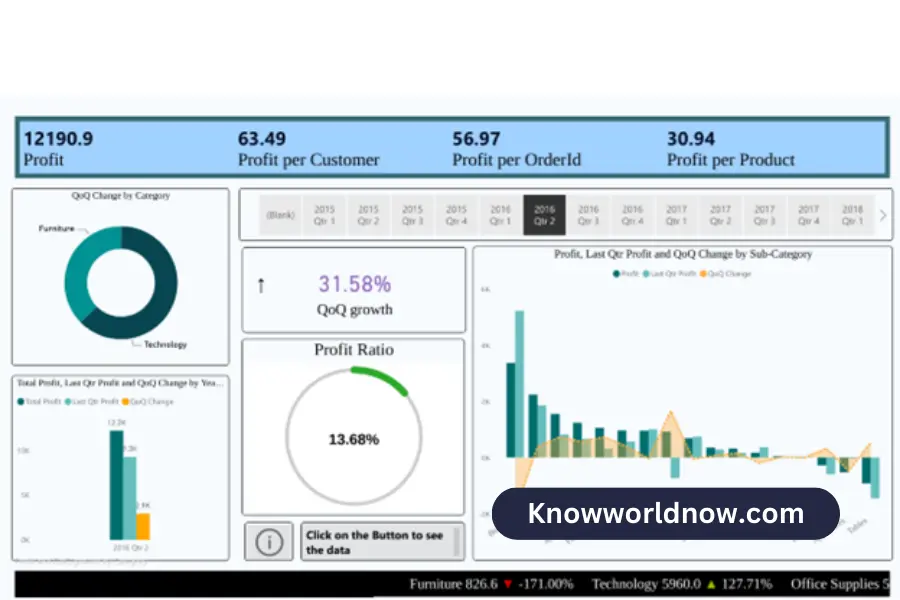Success depends on accurate financial budgeting and forecasting. For an organization to remain competitive, effectively manage resources, and reach its financial objectives, educated decisions must be made.
Businesses are using Business Intelligence (BI) solutions like Power BI to capture the enormous volumes of data available and obtain better insights into their financial performance as technology continues to advance.
Let’s examine how Power BI Certification can revolutionize financial accuracy via best practices in budgeting and forecasting. We will discuss the benefits of utilizing this potent tool, offer helpful advice, and provide examples of actual successes that show how Power BI has revolutionized financial management.
The Foundation of Financial Success: Accurate Budgeting
Each and every effective financial plan is built on a solid budget. Planning and resource allocation are necessary to accomplish both short-term and long-term objectives. Statistic spreadsheets, which take a lot of work to produce and maintain, are a common component of traditional budgeting techniques.
Additionally, manual data entry might result in human mistakes, jeopardizing the accuracy of the budgeting procedure.
Empowering Decision-Making with Dynamic Data Visualization
Microsoft’s very effective Power BI business intelligence and data visualization technology enables firms to abandon traditional budgeting techniques.
Finance experts are able to create interactive visual representations of raw financial data because to its dynamic data visualization features.
Financial analysts may design analytical dashboards and reports that offer real-time updates on key performance indicators (KPIs) including sales, costs, and profitability with just a few clicks.
Seamless Data Integration for a Holistic View
Power BI’s capacity to easily combine data from diverse sources is one of its key features. The days of manually combining data from several databases and spreadsheets are long gone. Users of Power BI may connect to a variety of data sources, including as on-premises databases and cloud-based systems.
Through this connection, finance professionals may gain a comprehensive understanding of the organization’s financial situation, enabling them to make better decisions.
From Chaos to Cohesion: Consolidating Data Effectively
Consolidating financial data from several divisions may be a difficult procedure in large corporations. Without a single platform, there may be anomalies and inconsistencies, which might result in improper forecasting and budgeting.
By offering a central location where all financial data can be automatically integrated, Power BI makes this process simpler. since of this, the business as a whole is more cohesive since financial experts have access to current and trustworthy information.
Automating Budgeting with Power BI
Budgeting and forecasting are revolutionized by Power BI’s primary feature of automation. Power BI may be used to automate time-consuming, repetitive budgeting activities, easing the entire process.
Finance teams may schedule data refreshes, create regular reports, and automate notifications for changes to the budget status. This improved efficiency reduces the possibility of human mistakes while also saving time and effort.
Enhancing Accuracy with Machine Learning and AI
Financial accuracy is further improved by Power BI’s integration with machine learning and artificial intelligence capabilities. Algorithms that use machine learning may examine past financial data, spot trends, and generate projections.
This data-driven methodology increases the level of precision in the budgeting and forecasting process while reducing dependence on arbitrary assumptions. Finance teams are able to make wise judgments as a consequence by using data-driven insights.
Unraveling the Future: Power BI and Predictive Forecasting
Traditional forecasting techniques frequently fail to account for complicated market dynamics and erratic outside sources. By incorporating many factors and real-time data, predictive forecasting, enabled by Power BI, enables organizations to create models that are more accurate. This proactive strategy enables financial management by empowering finance teams to foresee future obstacles and possibilities.
Real-Life Success Story: Power BI in Action
Let’s examine a real-world success story of a company that used Power BI to execute budgeting and forecasting.
An international manufacturer, XYZ Corporation, was struggling with ineffective budgeting procedures that stifled its expansion. Budget cycles were delayed because the finance staff took an absurdly long time to combine data from numerous divisions.
Additionally, because their spreadsheets were static, it was challenging to spot new patterns and modify their financial plans accordingly.
Power BI was chosen by XYZ Corporation as its financial analytics solution after seeing the need for transformation. The outcomes were astonishing. Power BI gave finance professionals access to real-time financial insights by combining data from ERP systems, sales databases, and manufacturing records.
The financial team could now design interactive dashboards that showed profitability measures, spending breakdowns, and revenue estimates.
The dashboards were regularly updated thanks to automated data refreshes, which also eliminated the need for human data entry and decreased the possibility of mistakes.
Additionally, by using machine learning algorithms, XYZ Corporation was able to undertake predictive forecasting while accounting for changes in demand, market trends, and economic indicators.
The organization was able to improve inventory levels, simplify manufacturing, and make wiser investment decisions thanks to this data-driven strategy.
The financial correctness of XYZ Corporation has increased in only a few short months. Shorter budget cycles allowed the finance staff to concentrate on long-term financial planning.
Power BI’s improved visibility and prediction skills enabled XYZ Corporation to confidently handle market uncertainty and promote sustainable growth.
Best Practices for Implementing Power BI in Budgeting and Forecasting
Although Power BI has a great deal of potential to increase financial accuracy, best practices must be followed for a successful installation. Here are some essential pointers for maximizing Power BI’s advantages in predicting and budgeting:
Define Clear Objectives: Clearly outline the objectives and goals you want to achieve through Power BI implementation. Identify the specific financial KPIs you need to monitor and analyze to make informed decisions.
Data Governance and Quality: Ensure that the data integrated into Power BI is of high quality and follows consistent governance standards. Data accuracy is essential for reliable financial insights.
Collaboration and Communication: Encourage collaboration between finance teams and other departments to ensure all relevant data is included in the budgeting and forecasting process. Open lines of communication lead to more accurate insights. Precisely, Power BI budgeting and forecasting make things sequential, easy to handle and report.
Training and Skill Development: Provide adequate training and support to finance professionals to effectively use Power BI’s features and capabilities. A well-trained team can leverage the tool to its fullest potential.
Continuous Improvement: Continuously evaluate and fine-tune your Power BI implementation to align with changing business needs and data requirements. Regularly update dashboards and reports to stay ahead of evolving financial trends.
Empowering Financial Precision with Power BI
For finance professionals looking to improve financial accuracy, planning, and forecasting, Power BI has emerged as a game-changing technology.
Organizations now approach financial management in a completely new way because to its capabilities for dynamic data display, seamless data integration, and automation.
We have seen how firms may use Power BI to abandon static budgeting techniques and adopt data-driven decision-making through real-life success stories and best practices. Businesses can handle risks, seize opportunities, and promote sustainable growth by leveraging the power of predictive forecasting and AI-driven insights.
The potential of Power BI in financial management will only increase as technology develops. For firms hoping to maintain their competitiveness and find financial success in today’s changing business environment, using this revolutionary instrument is not just an option but a need.




